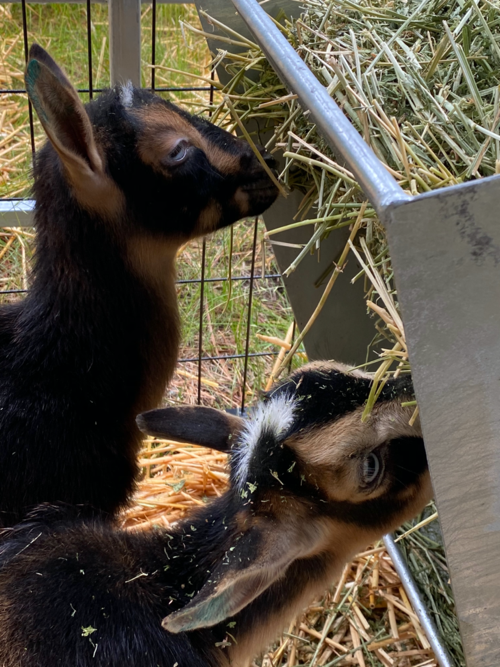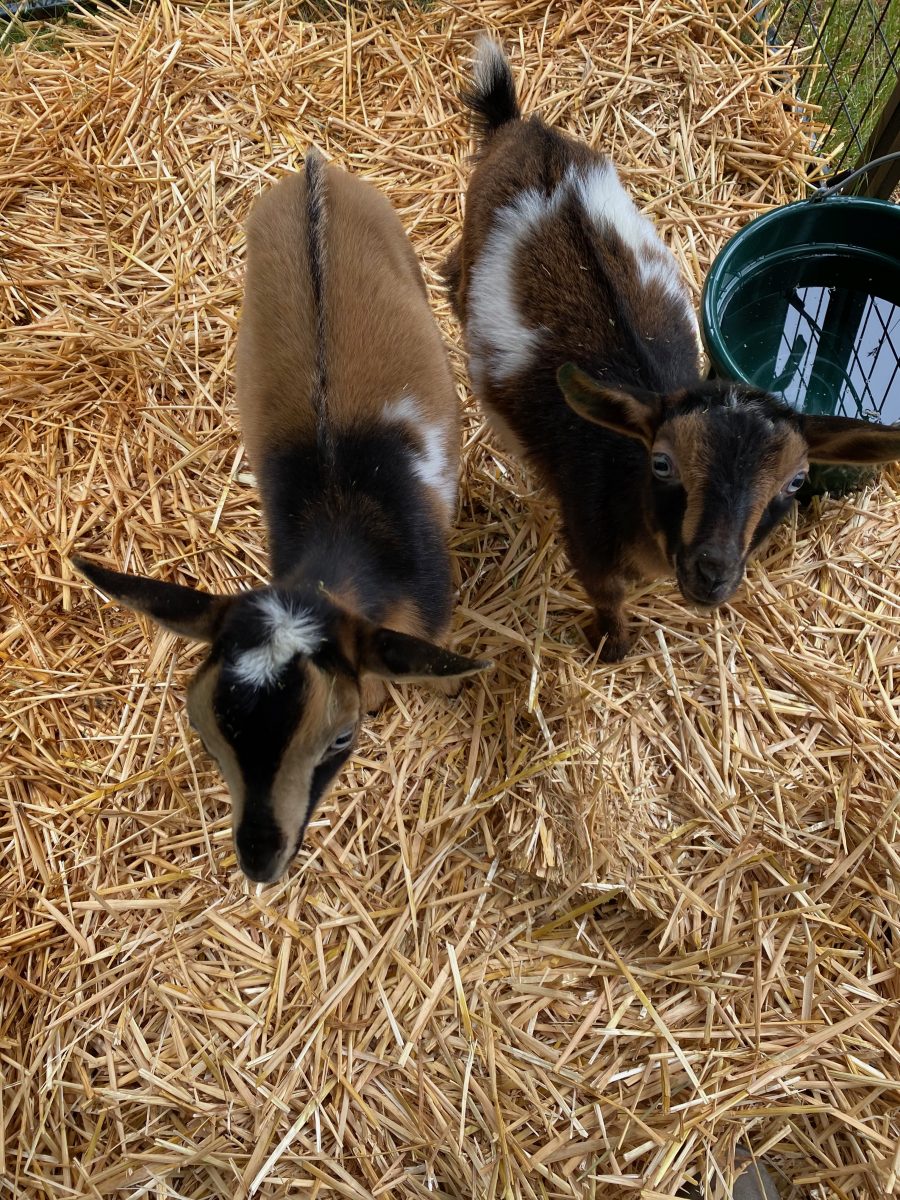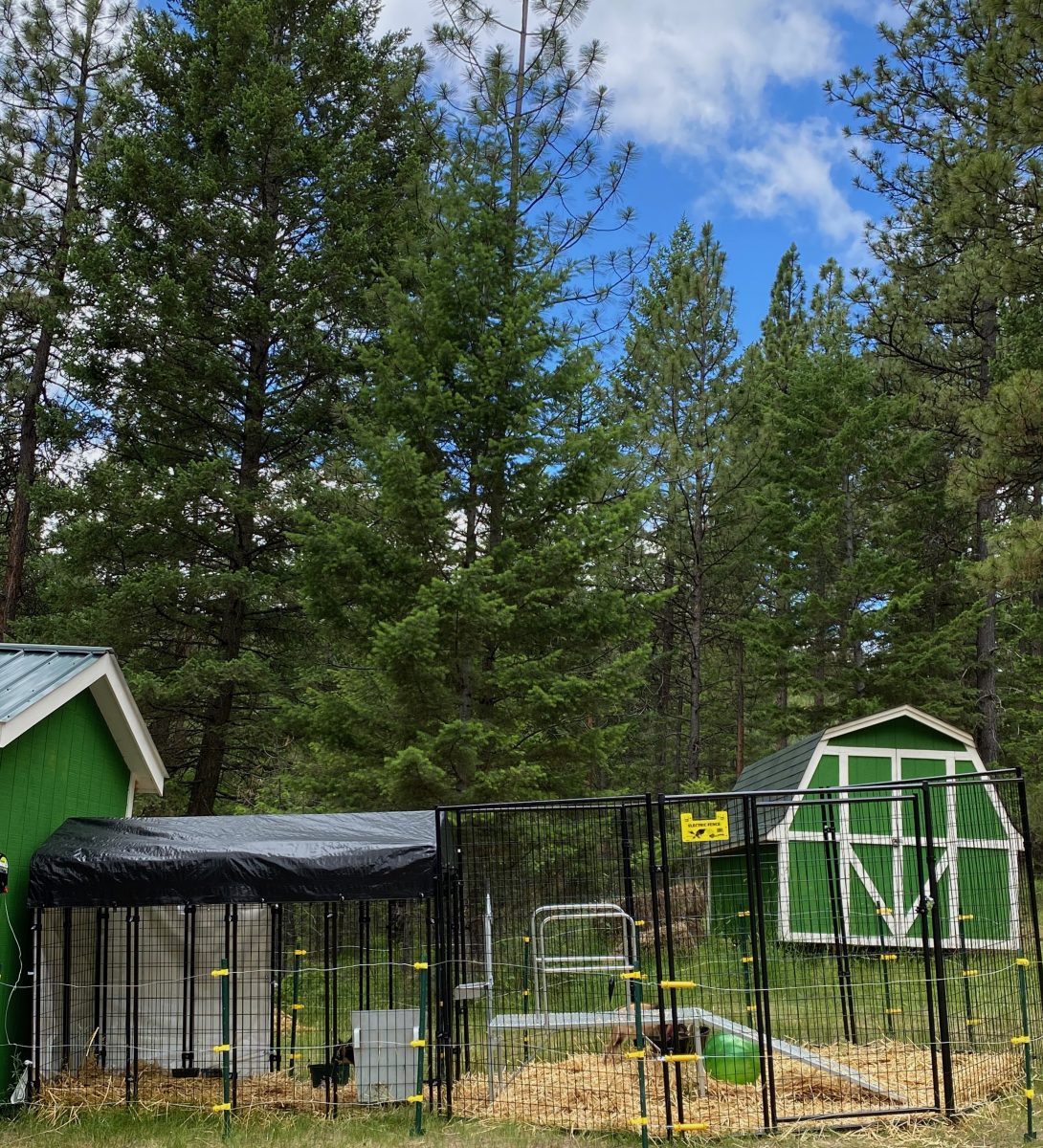
Zsa Zsa and Comet, Nigerian Dwarf goat kids, arrived on the homestead last week. I’ve wanted to add a source of dairy for some time, and Nigerian Dwarfs seem like a great option. If you’re thinking of getting goats, here’s a good place to get a sense of the basics as you’re getting started:
Why Nigerian Dwarf Goats
Nigerian Dwarf goats are the smallest of the dairy goats, yet two does can produce plenty of milk for a family. Their milk is high in butterfat, averaging 6.5% compared with cows at 4-5% and other dairy goats at 3-4.5% depending on the breed. The high butterfat should make it great for cheesemaking, yogurt, and other cultured dairy products.
Full grown they will weigh around 70 pounds, making them easy to handle. They also contribute an almost odorless source of manure compost for the garden.
Best part is they’re friendly and charming entertainers. I hadn’t expected to enjoy them as much as I do. Zsa Zsa in particular is a total snuggle bug. Comet is more independent, but not so independent she won’t butt in when I’m brushing Zsa Zsa with a look of “do me next!”

Shelter and space needs
At the moment I have them in a covered 4’x8′ shelter (converted dog kennel like this one) at night that opens to a 50 square foot fenced in area (I used kennel fencing like this) giving them room to play during the day. I added a tarp wrap around a corner of the sleeping pen to block drafts. The kennel and fencing walls are (so far) plenty strong to handle hanging a relatively heavy manger like the one in the top pic as well as dealing with goats attempting to climb them. [I don’t earn any revenue from the sites linked to; just provide them as examples].

Since we have wolves, mountain lions, bears, and other predatory critters about, the entire area is ringed with an electric fence. The electric fence stands far enough away from the interior fence so the doelings can’t accidentally reach through to the electric fence and get a shock.
For two doelings, the space seems to fit perfectly and keep them safe and warm even when we had a big storm the first night they arrived. Once they have kids–shooting for next summer–space needs will of course change. The plan is to build a barn next year with space for kidding pens, an indoor milking parlor, plus feed and equipment storage. I am holding off on that investment until I get a better sense of what will be the best setup.
Feeding
Feeding needs are relatively simple. In addition to the hay manger, I have a flat-backed 8-quart water bucket that hangs on the fence with a hook, a couple small containers for minerals and baking soda that hang on the fence, and a small trough for treats. That’s pretty much all you need for in-pen food and water containers.
A combo of alfalfa hay, timothy grass hay, chaffhaye (a fermented hay good for their digestion), and a special mix of goat grain I got from the farm I purchased the goats from makes up their main diet. Goats also need special goat minerals and benefit from access to baking soda to help with their digestion.
I give free access to the alfalfa and timothy grass hay, as well as to the goat minerals and baking soda so they can eat as much as they need. The feeding guideline for chaffhaye is about 1 pound for every 50 pounds in weight. I divide that up into two servings per day. The girls love the chaffhaye and get excited when I bring it to them. About 1/4 cup of grain per doeling once a day rounds out the feeding schedule. When they get to be adults, that amount can increase to about a 1/2 cup a day.
If I notice they’re gaining or losing too much weight, they look bloated, their stool is soft or some other “off” indicator, I’ll make adjustments. So far, though, they seem to be thriving.
Equipment
Eventually I’ll be milking these girls, so I purchased a milking stand like this one to get them used to it. The stand also works as a trimming stand for grooming and hoof trims. Currently it serves double duty in the pen providing the girls with something to climb on and parkour off of when they get the goat zoomies.
Their hooves need to be trimmed about once a month. For that I have hoof trimmers, a small wire brush to remove debris, a hoof knife for cleaning up edges, and a pocket rasp for a final smoothing.
Comet and Zsa Zsa both love to be brushed with a curry comb. It’s good for removing loose hair and debris to keep the girls tidy.
After winter shaving them down with clippers is recommended to keep their coats and skin healthy. Other than that there are standard vaccinations, dewormers, and the like. I’ll rely on my livestock veterinarian to keep all that in check.
Keep an eye here for updates, tips, and what I’m learning as the doelings grow.